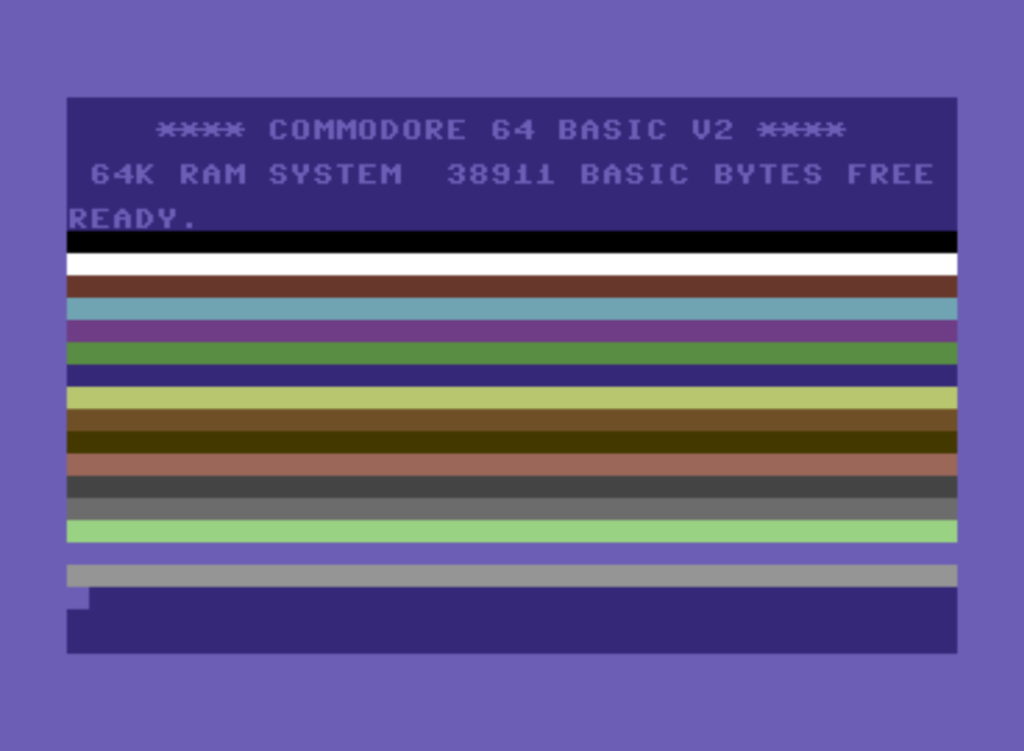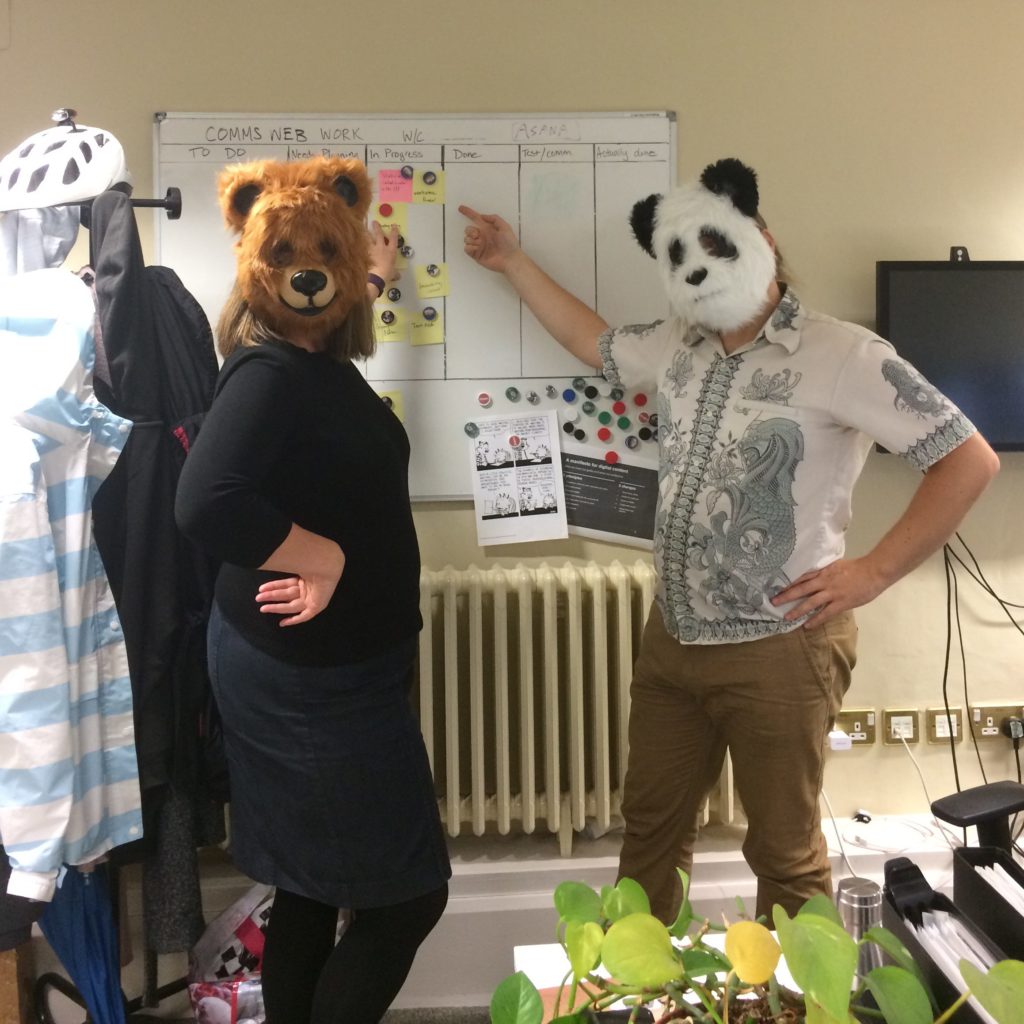…
 Now, it’s Saturday morning and you’re eager to try out what you’ve learned. One
of the first things the manual teaches you how to do is change the colors on the display. You follow the instructions, pressing
Now, it’s Saturday morning and you’re eager to try out what you’ve learned. One
of the first things the manual teaches you how to do is change the colors on the display. You follow the instructions, pressing CTRL-9 to enter
reverse type mode and then holding down the space bar to create long lines. You swap between colors using CTRL-1 through CTRL-8, reveling in your sudden new power over the TV screen.
As cool as this is, you realize it doesn’t count as programming. In order to program the computer, you learned last night, you have to speak to it in a language called BASIC. To you,
BASIC seems like something out of Star Wars, but BASIC is, by 1983, almost two decades old. It was invented by two Dartmouth professors, John Kemeny and Tom Kurtz, who wanted
to make computing accessible to undergraduates in the social sciences and humanities. It was widely available on minicomputers and popular in college math classes. It then became
standard on microcomputers after Bill Gates and Paul Allen wrote the MicroSoft BASIC interpreter for the Altair. But the manual doesn’t explain any of this and you won’t learn it for
many years.
One of the first BASIC commands the manual suggests you try is the PRINT command. You type in PRINT "COMMODORE
64", slowly, since it takes you a while to find the quotation mark symbol above the 2 key. You hit RETURN and this time, instead of complaining, the computer does exactly what you told it to do and displays “COMMODORE 64” on the next line.
Now you try using the PRINT command on all sorts of different things: two numbers added together, two numbers multiplied together, even several
decimal numbers. You stop typing out PRINT and instead use ?, since the manual has advised you that
? is an abbreviation for PRINT often used by expert programmers. You feel like an expert already, but
then you remember that you haven’t even made it to chapter three, “Beginning BASIC Programming.”
…
I had an Amstrad CPC, myself, but I had friends with C64s and ZX Spectrums and – being slightly older than the author – I got the
opportunity to experiment with BASIC programming on all of them (and went on to write all manner of tools on the CPC 464, 664, and 6128 models). I’m fortunate to have been able to get
started in programming in an era when your first experience of writing code didn’t have to start with an
examination of the different language choices nor downloading and installing some kind of interpreter or compiler: microcomputers used to just drop you at a prompt which
was your interpreter! I think it’s a really valuable experience for a child to have.


